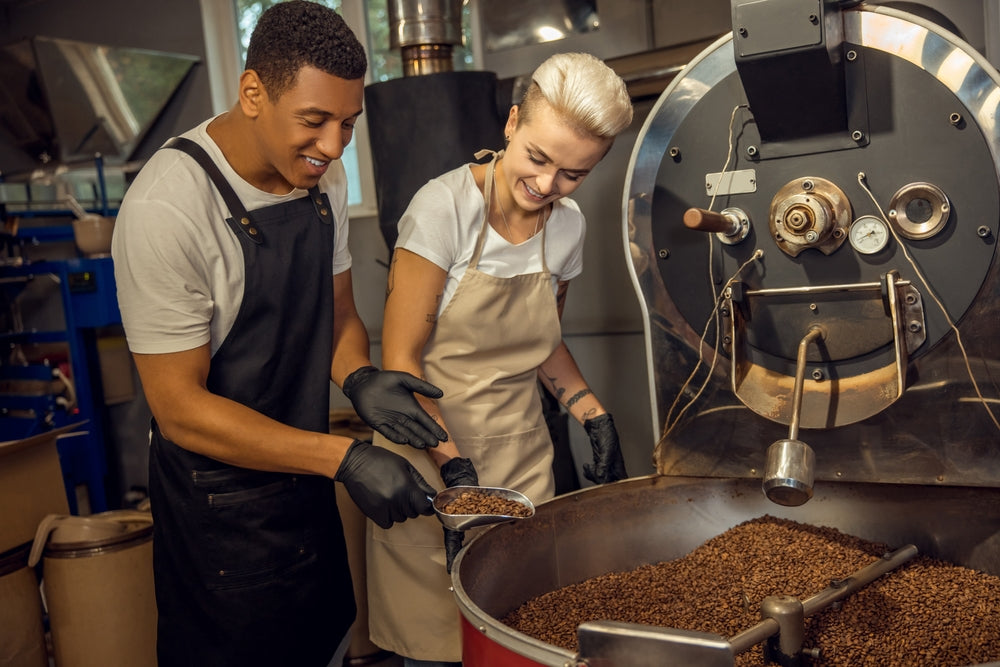Add description, images, menus and links to your mega menu
A column with no settings can be used as a spacer
Link to your collections, sales and even external links
Add up to five columns
Add description, images, menus and links to your mega menu
A column with no settings can be used as a spacer
Link to your collections, sales and even external links
Add up to five columns

How to Roast Reserve Coffee: An Expert Guide
June 14, 2024 3 min read
How to Roast Reserve Coffee: An Expert Guide
Welcome to our comprehensive guide on roasting Reserve Coffee, where artisanal craftsmanship meets scientific precision. Whether you're a seasoned coffee roaster or a passionate home barista, mastering the art of roasting Reserve Coffee can elevate your coffee experience to new heights. This guide will walk you through the origins, characteristics, roasting techniques, and tips for achieving the perfect roast. Let's embark on this flavorful journey to discover the secrets of Reserve Coffee.
Origins and Significance of Reserve Coffee
The Essence of Reserve Coffee
Reserve Coffee represents the pinnacle of coffee quality, sourced from exclusive estates and renowned for its exceptional flavor profiles. These beans are often grown in optimal conditions, handpicked, and processed with meticulous care to preserve their unique characteristics. Originating from various regions around the world, each batch of Reserve Coffee carries the distinct terroir of its homeland, offering a rich tapestry of flavors.
Why Reserve Coffee?
Reserve Coffee is sought after for its unparalleled quality and complexity. These beans undergo rigorous selection processes, ensuring only the best make it to the roaster. The result is a cup of coffee that delights the senses with its intricate aroma, balanced acidity, and profound depth of flavor.
Characteristics of Reserve Coffee Beans
Flavor Profiles
Reserve Coffee beans are known for their diverse and sophisticated flavor profiles. Depending on the region of origin, you may encounter notes ranging from fruity and floral to chocolatey and nutty. Understanding these nuances is crucial for tailoring the roasting process to highlight the beans' inherent qualities.
Bean Density and Size
The density and size of Reserve Coffee beans can vary significantly, influencing the roasting process. Denser beans, typically grown at higher altitudes, require more heat to develop their flavors, while larger beans may need adjustments in roasting time to ensure even development.
Roasting Techniques for Reserve Coffee
Equipment and Preparation
Choosing the right equipment is the first step in roasting Reserve Coffee. A high-quality roaster with precise temperature control and consistent airflow is essential. Before starting, ensure your equipment is clean and calibrated to avoid any off flavors from previous roasts.
The Roasting Process
- Preheat the Roaster: Begin by preheating your roaster to the desired starting temperature. This step ensures an even roast and prevents temperature fluctuations.
- Charge the Beans: Once the roaster reaches the set temperature, add the Reserve Coffee beans. Monitor the initial stages closely, as this is when moisture is released, and the beans undergo significant physical changes.
- First Crack: As the beans heat up, they will reach a point known as the first crack, where they emit a distinct cracking sound. This is a critical phase, indicating that the beans are beginning to develop their flavors.
- Development Time: After the first crack, focus on the development time to fine-tune the flavor profile. Extending this phase can enhance sweetness and body, while a shorter development time preserves acidity and brightness.
- Cooling: Once the beans reach the desired roast level, quickly cool them to halt the roasting process. This step is crucial to lock in the flavors and prevent over-roasting.
Monitoring and Adjusting
Throughout the roasting process, use sensory evaluation and data logging to monitor the beans' progress. Adjusting variables such as temperature, airflow, and roast time can help achieve the perfect balance of flavors. Utilize machine learning algorithms to analyze roasting data and predict optimal roasting profiles for future batches.
Tips for Perfecting Your Roast
- Experiment with Profiles: Don't be afraid to experiment with different roasting profiles to discover the full potential of your Reserve Coffee beans. Record your findings and adjust based on the flavor outcomes.
- Cupping: Regularly cup your roasted coffee to evaluate the flavors and make necessary adjustments. This practice helps refine your technique and ensures consistency across batches.
- Stay Updated: Keep up with the latest trends and research in coffee roasting. Join online communities, attend workshops, and collaborate with other coffee enthusiasts to continually improve your skills.
Conclusion
Roasting Reserve Coffee is both an art and a science, requiring dedication, precision, and a deep understanding of the beans' unique characteristics. By following this guide and incorporating advanced techniques and machine learning insights, you can unlock the full potential of your Reserve Coffee, delivering an unparalleled coffee experience. Happy roasting!
Subscribe
Sign up to get the latest on sales, new releases and more …
